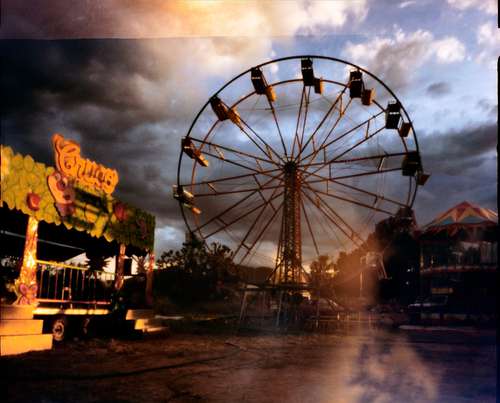With the longing for his memory, Regina Mejía captured the photos of the exhibition Evocations
With the nostalgia of her memory, the photographer Regina Mejía captured the places where it seems that time does not pass and tends to disappear. Thanks to his Stenopian camera, made with a wooden box, he recorded stores, fairs and canteens in towns and neighborhoods of his native Oaxaca, a work that meets in the exhibition Evocations.
In an interview with The day, Mejía explained that it began almost nine years ago to use the Stenopic, thanks to the teachings of María Luisa Santos Cuéllar, An evangelizer of the technique
. From there he was very interested in analog photography, since he involves artisanal processes in the development. He explained that when he uses the Stenic, he feels nostalgia.
The sample is made up of three series: Return, with images of traditional fairs; Between Cup and Cup, With photographs of canteens, and Today does not trust, tomorrow, where he recovers captures of stores, tlapal stores and apothecies.
Mejía says that one day he began to photograph his people, Villa Talea de Castro, and then the place where his grandfather, San Andrés Olaga lived. He said that since then the Sierra Juárez, the Mixteca, Tlaxiaco, Miahuatlán and the central valleys of Oaxaca have walked to capture those spaces that seem suspended over time.
He described that in 2017 he made the series of the fairs, thanks to his dad, who “always knew where there were feast parties and we had the habit of going together. With my wooden box I managed to take panoramic photos of the fairs to see all the games. Even, I became a friend of the owner of the carousel, Mr. Toño Salazar, who already died; it was also this part of going, talk and know a little more of these people.
“In the case of the canteens, my grandfather had a pool and bar she The tariacuri, by Javier Solís and Pedro Infante; All this traditional Mexican music. I grew up and passed through the canteens, there was a fence of my work called Cocos; I liked to look out and smell to remember the smell of mezcal that was consumed in the villages, ”he recalled.
The photographa explained that in the stores of the villages everything was sold: “You found many things; even, they all had their bar to take what you bought there. I have been looking for that atmosphere that remites me at a time that has already happened, and I try They are old, and remodel or close.
I had to hurry, because everything was changing. One day I arrived at a canteen and three days had already modified the lamps and tables, by a more modern furniture. In another canteen the owner told me that he was about to make some adjustments and ended up throwing the place to make another. I got to stay with the images before.
For Mejía, with the Stenopian camera “you need a lot of calm to capture a photo. That helped me a lot, stop and think, have the patience of waiting for how much it has to be exposed, reveal and see the results. I like it a lot, because when you see the images, you are still amazing; that is the magical: how of such a basic camera, that you can build with any material, you achieve very good results.
“We appoint the sample Evocations, Because it is to remember another time. It was a proposal by curator Alejandro Castellanos, who when he saw the three series said: ‘It’s like an evocation.’ And yes, it is what you miss from another time in these places, ”he said with melancholy.
Evocations It opens today at noon in the Henestrosa Library (Porfirio Díaz 115, Corner Morelos, Historic Center of Oaxaca) and will be until May 9 as part of the 16 week of Stenopae photography, organized by María Luisa Santos Cuéllar.
